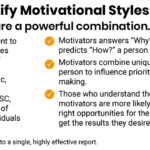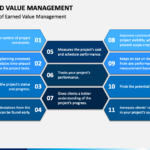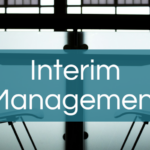We all have days when our thoughts seem stuck in a loop and we don’t know what to do. Stress is an unavoidable part of life, but it’s not necessarily something to panic about.
When it comes to banishing stress, learning how to let go of our need for control is key. This means relinquishing power over every situation, no matter how small. Taking the time to figure out what your priorities are is essential in allowing yourself the headspace you need to make positive changes in your life.
It doesn’t have to be difficult either. There are enough simple steps you can take towards gradually surrendering all the micromanagement that can bring such overwhelming stress into your life.
How to Let Go of Control and Make Time for Priorities?
Letting go of control can be tricky. Whether scheduling our obligations to the last minute or ensuring our environment is just right, we like to be in control. But this level of control can cause stress and burnout, leaving us feeling overwhelmed and unable to focus on our priorities.
You can make space for yourself by letting go of control by following these simple steps.
STEP 1: Identify Your Sources of Stress
Identifying the sources of stress in your life is the first step towards learning to let go of control. This means taking an honest look at which areas or aspects of life are causing you to feel overwhelmed, anxious, or frustrated.
Ask yourself questions such as:
- What am I holding myself accountable for that I don’t have to?
- What do I need to do more to move forward with my goals?
- Once you identify what is stressing you out, it will be easier to take back control and free up some time for other things.
STEP 2: Take Control of What You Can
Once you have identified where your stress is coming from, it’s time for action. Taking control starts by choosing what activities and commitments are essential for you. Getting rid of something that isn’t necessary or doesn’t add value to your life will free up your schedule for things that do.
Set realistic deadlines and break complex tasks into smaller chunks, making them easier to manage when prioritizing. Try not to spread yourself too thin by saying yes too often or taking on too much responsibility.
STEP 3: Put Your Feelings in a Psychological Dump
This step requires a bit of bravery, but it’s essential to let go of control to make more time for our priorities. Putting your feelings into a psychological dump means acknowledging your emotions without overthinking them or dwelling on them.
Simply accept your emotion without attaching any further meaning or expectation. This will help you better understand the source behind your emotions to develop healthier coping skills going forward rather than using unhealthy methods.
STEP 4: Keep Some Distance From The Source
When letting go of control, one of the most critical steps is increasing the physical distance between yourself and the source of stress. You can do some things to help reduce stress and be more productive.
This includes going on vacation, doing yoga or meditation, or spending time with friends and family who understand what you are going through. Overall, we feel better knowing we have taken ourselves out of an uncomfortable situation. This allows us to think more clearly about what we want to do next.
STEP 5: Take Your Time Transitioning
Taking time to transition can be difficult because it requires the ability to let go of control, which can be challenging for people who are used to having a rigid routine or schedule. To make time for priorities, start by focusing on the things that are most important to you.
Make a list of your top three priorities and develop a plan of action to ensure that these priorities get dedicated time in your life. Identify what needs to be adjusted to fit in the extra time needed, such as taking on fewer activities outside of work or home life.
STEP 6: Make a Decision Regarding its Future Handling
When making decisions regarding future handling, you must remember that all decisions take courage and perseverance. The key is understanding how much control one has over the situation and working with what is possible rather than fixating on an ideal outcome.
Analyzing potential routes and selecting one can make this process easier. Also, consider the current situation and project to the future outcomes when deciding on actions.
STEP 7: Put Yourself in the Real World
Putting yourself in the real world means being aware of the impact of your choices on others and understanding how those choices could affect them down the road.
This will require accepting that some situations may need adjusting or compromising due to their complexity or sensitivity. Taking a mindful approach when dealing with these situations will help avoid any negative consequences in the long run.
STEP 8: Embrace Uncertainty While Accepting Life’s Uniqueness
Uncertainty is part of life, so embracing it will allow for more flexibility and creativity when facing challenges. Life’s uniqueness is worth adopting rather than ignoring because it provides new opportunities for growth outside our comfort zone while remaining grounded in reality.
When faced with uncertainty, practice letting go of control, thinking critically about potential solutions, and pondering different paths that could lead to success or failure. This will help us accept life’s unpredictability while preparing us for new experiences.
Why Is Letting Go of Control and Freeing Mindspace Important?
Having some headspace is important because it helps us to clear our minds, destress and relax. It allows us to step back from our hectic lives and focus on the things that matter. It gives us physical, emotional, and mental space to be creative.
It also helps us to manage stress and anxiety better, maintain good relationships with our family, friends, and colleagues, get better sleep at night and stay positive overall. Mindspace isn’t just about having an empty mind. It’s about allowing time for reflection, creativity, and exploration without feeling overwhelmed.
When we free up space for thought, we permit ourselves to explore outside the box, try new things, and challenge beliefs or ideas we may have held for years without consequence or consequence-free failure. We can also start thinking more critically about what we want out of life and create better plans for achieving those goals.
What is the Primary Key to Letting Go?
The key to letting go is ultimately accepting yourself unconditionally. This means taking a step back and getting our flaws, imperfections, and mistakes as part of who we are. It involves understanding that we are all human and that no one is perfect.
We can recognize the negative aspects of ourselves and still choose to love and accept them despite it all. It also involves acknowledging our strengths and successes while remaining humble and mindful of our shortcomings.
When we learn to accept ourselves unconditionally, letting go becomes more accessible because it is no longer about punishing ourselves or needing approval from others but rather being honest with ourselves about our current state.
Are There Any Things We Can’t Control?
There are some things in life we can’t control, like:
- How people treat you
- People’s opinions of you
- People’s actions for you
- People’s feelings for you
- People’s beliefs about you
- Predispositions and limitations
- Your physical needs and requirements
- Unavoidable changes
Let Go of Control for a Happier Life
Taking control of our lives can definitely be satisfying, but it’s not the only way to experience the beauty of life. Learning when it’s time to let go of that need for control is an essential part of living happily and without stress.
We can’t always get what we want, nor should we expect to, because no matter how hard we try, there are some things that just aren’t meant to be changed or controlled. When we become accepting of our lack of control, then suddenly the world opens up its expanse of variety to us.
By allowing reality to remain unique, unexpected and ever-changing, we free ourselves from the shackles of self-doubt and the oppressive constructs of our own expectations.





